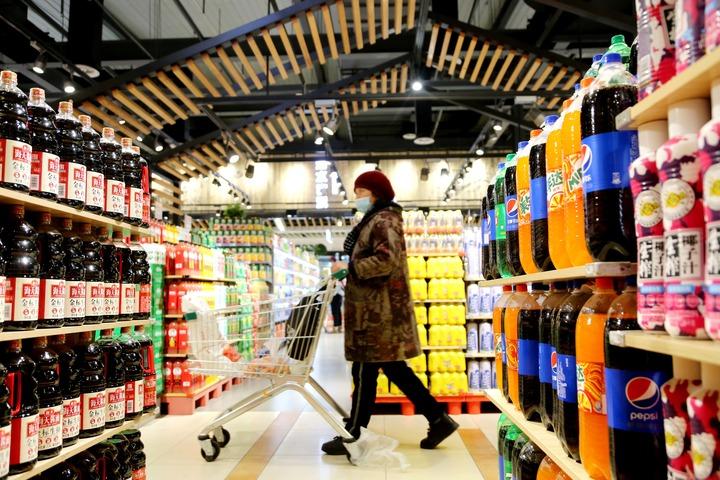BEIJING, March 9 (Xinhua) -- China's consumer prices remained at a subdued level in February while factory-gate inflation softened, but analysts call for a high alert on future risks in light of external environment changes.
The consumer price index (CPI), a main gauge of inflation, rose 0.9 percent year on year in February, flat from the growth seen in the same period last year, the National Bureau of Statistics (NBS) said Wednesday.
On a monthly basis, the CPI gained 0.6 percent due to rising food demand during the Spring Festival, which fell in February this year, along with the fluctuations in global energy prices, said Dong Lijuan, a senior statistician with the NBS.
Food prices went up 1.4 percent from the previous month, driving up the monthly consumer inflation by 0.26 percentage points, according to the data.
Prices for industrial consumption products rose 0.8 percent from January, fueled by high global energy costs. The prices of gasoline, diesel and liquefied petroleum gas went up by 6.2 percent, 6.7 percent and 1.3 percent, respectively.
The core CPI, which excludes food and energy prices, gained 1.1 percent year on year, narrowing from the 1.2-percent rise in January.
China has set its CPI target at around 3 percent for 2022, according to a government work report submitted on March 5 to the national legislature for deliberation.
Given the government's effective policies on stabilizing the supply of bulk commodities, China is expected to keep inflation within a controllable range, but future trend needs to be closely watched, commented Wen Bin, chief analyst at China Minsheng Bank.
Multiple factors including rising global inflation and the gradual exit of easing policies from developed countries would pile uncertainties on global and domestic inflations, said Wen.
Wednesday's data also showed China's producer price index (PPI), which measures costs for goods at the factory gate, rose 8.8 percent year on year in February.
The figure moderated from the 9.1 percent year-on-year increase registered in January this year, NBS data showed.
Month on month, the PPI inched up 0.5 percent as rising crude oil and non-ferrous metal prices led to the monthly increase.
The PPI of oil exploitation increased by 13.5 percent month on month, while that of non-ferrous metal processing went up 2 percent from a month ago.
Despite the slowing pace of PPI growth, the index remained at an elevated level, which may pass inflationary pressure onto the consumer market, Wen warned.




 A single purchase
A single purchase









